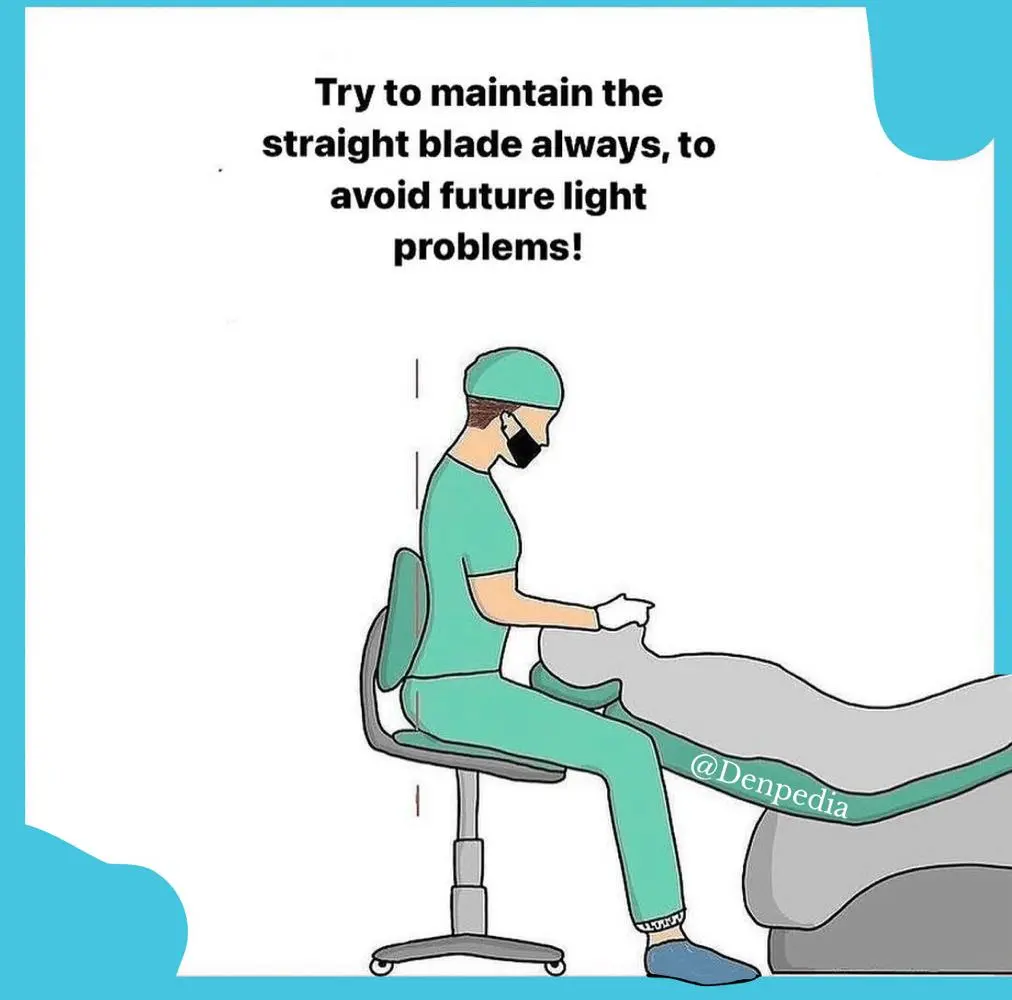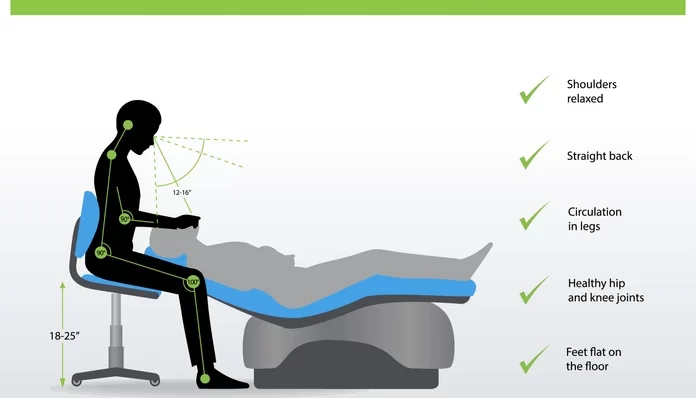Dentistry is a demanding field that requires precision, focus, and consistent performance. Among the various aspects contributing to successful dental practice, one critical yet often overlooked element is ergonomics. Ergonomics in dentistry refers to the design and arrangement of the workplace, tools, and equipment to maximize efficiency while minimizing discomfort and the risk of musculoskeletal disorders (MSDs) among dental professionals. In this comprehensive article, we delve into the significance of ergonomics in dentistry and its profound impact on both the well-being of dental practitioners and the quality of patient care.
Understanding Ergonomics in Dentistry
- Workplace Design
- Instrument Design
- Body Posture and Movement
Workplace Design
- Operator Chair and Patient Chair: Ergonomically designed chairs for the dentist and patient ensure optimal positioning, reducing strain during procedures and enhancing patient comfort.
- Work Surfaces and Equipment Placement: Proper arrangement of instruments, trays, and monitors minimizes repetitive movements, allowing seamless access to tools and reducing fatigue.
Instrument Design
- Handheld Tools: Ergonomic design of handpieces and instruments reduces hand fatigue and enhances precision during intricate procedures.
- Loupes and Lighting: Properly adjusted loupes and adequate lighting improve visibility, reducing eye strain and errors.
Body Posture and Movement
- Correct Positioning: Maintaining a neutral body posture prevents strain on the spine, shoulders, and wrists. Techniques like the 4-handed dentistry method aid in reducing excessive movements.
- Regular Movement and Stretching: Incorporating short breaks for stretching and movement helps alleviate muscle tension and prevents long-term musculoskeletal issues.
Impact on Dental Professionals
- Physical Well-being
- Improvement in Efficiency and Precision
Physical Well-being
- Reduced Musculoskeletal Disorders: Implementing ergonomic principles significantly lowers the risk of MSDs like carpal tunnel syndrome, neck pain, and back problems among dental professionals.
- Enhanced Comfort: Proper ergonomic setup leads to reduced physical discomfort during long procedures, promoting better focus and job satisfaction.
Improvement in Efficiency and Precision
- Faster Procedures: An ergonomically optimized workspace allows for smoother workflows, reducing procedure times while maintaining precision and quality of work.
- Decreased Errors: Improved visibility and reduced fatigue contribute to fewer errors and enhanced patient safety.
Ensuring Patient Care and Experience
- Improved Communication and Trust
- Quality of Care
Improved Communication and Trust
- Enhanced Interaction: Comfortable dentistry positively impacts patient interaction, building trust and easing anxiety.
- Efficient Procedures: Ergonomics not only benefits the dentist but also ensures a smoother and more comfortable experience for the patient.
Quality of Care
- Consistency in Treatment: Reduced fatigue and better focus enable consistent and high-quality treatment outcomes.
- Patient Comfort: A comfortable environment leads to more relaxed patients, facilitating better treatment adherence and overall satisfaction.
Implementation and Best Practices
- Education and Training
- Regular Assessments and Adaptations
Education and Training
- Awareness Programs: Providing education on ergonomics during dental training and continuous professional development reinforces the importance of ergonomic practices.
- Workshops and Demonstrations: Hands-on workshops and practical demonstrations assist dental professionals in implementing ergonomic principles effectively.
Regular Assessments and Adaptations
- Periodic Evaluations: Regular assessment of workspace ergonomics ensures ongoing optimization and addresses any emerging issues.
- Adapting to Technological Advances: Embracing new technologies and ergonomic advancements in dental equipment aids in continuous improvement.
Ergonomic positioning in dentistry

Ergonomic positioning in dentistry is a critical aspect aimed at optimizing the posture and movements of dental professionals during procedures. It involves arranging the workspace, equipment, and body posture to reduce strain, prevent injuries, and enhance overall efficiency. Here’s a deeper dive into the elements of ergonomic positioning:
- Operator and Patient Chair Setup
- Work Surface and Equipment Placement
- Body Posture and Movement Techniques
Operator and Patient Chair Setup
- Dentist’s Chair
- Patient’s Chair
Dentist’s Chair

- Adjustable height and lumbar support: Ensures the dentist can maintain a neutral spine posture and minimizes strain on the back.
- Armrests and foot pedals: Support relaxed and stable arm positions to reduce fatigue in the upper limbs.
- Swivel and recline options: Allow flexibility and ease of movement during procedures without compromising posture.

Patient’s Chair
- Positioning for accessibility: Adjustments to allow for proper visibility and access to the patient’s oral cavity, reducing excessive leaning or reaching by the dentist.
- Comfort and stability: Ensures the patient is comfortably seated, promoting relaxation and aiding the dentist in performing procedures efficiently.
Work Surface and Equipment Placement
- Dental Unit Setup
- Handpiece and Instrument Handling
Dental Unit Setup
- Arrangement of instruments and trays: Organized placement within arm’s reach to minimize excessive movements.
- Adjustable monitor and lighting: Properly positioned for clear visibility without straining the neck or eyes.
Handpiece and Instrument Handling
- Ergonomically designed tools: Instruments with comfortable grips and balanced weight distribution to reduce strain on the hands and wrists.
- Integration of ergonomic loupe systems: Positioned correctly to improve magnification without compromising posture.
Body Posture and Movement Techniques
- Neutral Body Position
- 4-Handed Dentistry Technique
- Microbreaks and Movement
Neutral Body Position
- Aligning the spine: Sitting in a way that maintains the natural curvature of the spine, reducing stress on the back.
- Balanced weight distribution: Evenly distributing body weight between both hips to prevent strain on one side.
4-Handed Dentistry Technique
- Collaboration between dental assistant and dentist: Optimizes efficiency by allowing the dentist to focus on procedures while the assistant handles instruments and assists in positioning.
Microbreaks and Movement
- Scheduled breaks: Encouraging short breaks to stretch and change posture to prevent prolonged static positions.
- Ergonomic exercises: Specific stretches or movements targeting areas prone to strain, such as the neck, shoulders, and wrists.
Benefits of Ergonomic Positioning

- Reduced Strain and Fatigue
- Enhanced Precision and Efficiency
- Improved Long-Term Health
Reduced Strain and Fatigue
Proper positioning minimizes stress on muscles and joints, reducing the risk of musculoskeletal disorders and fatigue during lengthy procedures.
Enhanced Precision and Efficiency
Comfortable positioning allows for better focus, steadier movements, and improved accuracy in performing intricate dental tasks.
Improved Long-Term Health
By promoting better posture and reducing repetitive strain, ergonomic positioning supports the long-term health and well-being of dental professionals.
Implementing Ergonomic Positioning
- Training and Awareness
- Regular Assessment and Adjustment
Training and Awareness
Education on proper posture and ergonomic practices through workshops, training programs, and continuous professional development.
Regular Assessment and Adjustment
Periodic evaluations of workspace ergonomics to identify and address any issues, ensuring ongoing optimization for the practitioner’s comfort and safety.
In essence, ergonomic positioning in dentistry is about optimizing the physical relationship between the dental professional, patient, and workspace to ensure a comfortable, efficient, and safe environment for both practitioners and patients. It’s an ongoing commitment to maintaining and adapting ergonomic practices for the well-being and performance of dental professionals in the demanding field of dentistry.
Overcoming Challenges and Embracing Change
While the benefits of ergonomic practices in dentistry are evident, implementing these changes might pose challenges, especially in established practices resistant to change. However, overcoming these challenges is crucial for the long-term health and success of dental professionals.
- Resistance to Change
- Financial Considerations
- Cultural Shift
Resistance to Change
- Education and Awareness: Highlighting the long-term advantages of ergonomic adjustments through evidence-based data and success stories can alleviate resistance.
- Gradual Implementation: Introducing changes gradually allows for adaptation without disrupting the workflow significantly.
Financial Considerations
- Long-Term Investment: Viewing ergonomic improvements as investments in the well-being of practitioners can justify initial expenses.
- Seeking Financial Support: Exploring grants, tax incentives, or financing options for ergonomic upgrades can alleviate financial strain.
Cultural Shift
- Leadership Involvement: Engaging leaders within the practice to champion ergonomic initiatives can encourage widespread adoption.
- Team Participation: Involving the entire dental team in discussions and decision-making fosters a culture of collaboration and openness to change.
Evolving Trends in Dental Ergonomics
As technology advances and research in ergonomics progresses, new trends continually emerge in dental practice design and tools:
- Digital Dentistry
- Advanced Instrumentation
- Virtual Reality (VR) and Augmented Reality (AR)
Digital Dentistry
Intraoral Scanners and CAD/CAM Technology: Digital tools reduce physical strain by minimizing repetitive motions and enhancing accuracy in procedures like impression-taking and restorations.
Advanced Instrumentation
Ergonomic Handpiece Designs: Continued advancements in instrument design prioritize ergonomic features to minimize hand fatigue and enhance precision.
Virtual Reality (VR) and Augmented Reality (AR)
Training and Treatment Planning: VR and AR applications aid in ergonomic training, treatment planning, and simulation, enhancing precision and reducing physical strain.
The Role of Regulatory Bodies and Guidelines
Regulatory bodies play a pivotal role in promoting ergonomic standards and guidelines within dentistry:
- Occupational Safety and Health Administration (OSHA)
- Professional Associations
Occupational Safety and Health Administration (OSHA)
Guidance and Compliance: OSHA provides regulations and resources to ensure workplace safety, including ergonomic considerations in dentistry.
Professional Associations
Recommendations and Support: Dental associations offer guidelines and resources to promote ergonomic best practices among practitioners.
Looking Ahead: Future Perspectives
The future of ergonomics in dentistry is poised for significant advancements and integration:
- Customization and Personalization
- AI Integration
- Well-being-Centric Designs
Customization and Personalization
Individualized Ergonomics: Tailoring ergonomic setups to individual practitioner needs through innovative technologies and personalized adjustments.
AI Integration
Smart Ergonomic Solutions: Integration of artificial intelligence to analyze movements, suggest optimal positions, and enhance ergonomic setups in real-time.
Well-being-Centric Designs
Holistic Approaches: Designing dental spaces and equipment with a focus on overall well-being, integrating elements promoting mental and physical health.
Conclusion
Ergonomics in dentistry is not merely about convenience but an essential element contributing to the overall health, efficiency, and quality of dental practice. By prioritizing ergonomic principles in workplace design, instrument development, and professional practices, dental professionals can significantly mitigate the risk of physical ailments, enhance patient care, and elevate the standard of dental services. Embracing and consistently applying ergonomic strategies ensures a healthier, more efficient, and patient-centric dental environment, benefiting both practitioners and those seeking oral care.







Frederique Lind
11 January 2024Your prose is a literary garden, where ideas blossom into the vibrant blooms of intellectual insight. Each paragraph is a petal of wisdom, creating a tapestry of thought that enchants readers with its floral elegance.
Jaime Tillman
11 January 2024Your writing is a voyage to the inner sanctum of knowledge, where each sentence is a key unlocking the doors to profound understanding. The nautical journey through your ideas leaves readers navigating the seas of enlightenment.
Clara
12 June 2024Excellent article. Keep writing such kind of information on your page.
Im really impressed by your blog.
Hey there, You have done a fantastic job. I will certainly digg it and in my view suggest to my friends.
I’m sure they will be benefited from this web site.
Margo
13 June 2024It’s not my first time to visit this web page, i am visiting this site dailly
and obtain pleasant data from here every day.
world cup news
14 June 2024Your writing has a way of making complex topics seem approachable. Thank you for demystifying this subject for me.
news central asia
14 June 2024This blog post is a goldmine of information! I’ve bookmarked it so I can refer back to it whenever I need a refresher on the topic.